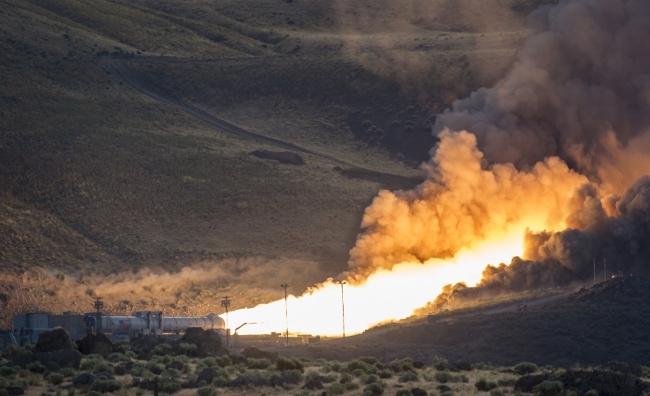
NASA’s SLS booster fired-up successfully, completes testing
The most powerful rocket in the world has completed its testing before it heads out to space with NASA’s Orion spacecraft in late 2018, paving the way for a future mission to Mars.
A booster for NASA’s Space Launch System (SLS) was successfully fired up for its second qualification ground test at Orbital ATK’s.

“This final qualification test of the booster system shows real progress in the development of the Space Launch System,” said William Gerstenmaier, associate administrator for the Human Exploration and Operations Mission Directorate at NASA Headquarters in Washington. “Seeing this test today, and experiencing the sound and feel of approximately 3.6 million pounds of thrust, helps us appreciate the progress we’re making to advance human exploration and open new frontiers for science and technology missions in deep space.”
The booster was tested 40° F – the colder end of its accepted propellant temperature range. Once ignited, temperatures inside the booster reached almost 6,000 degrees. The test, which lasted about two minutes provided engineers with a plethora of data to sift through to make any necessary adjustments.
Once the booster is finalized, two five-segment boosters and four RS-25 main engines will power SLS on deep space missions. The solid rocket boosters will operate in parallel with SLS’s main engines for the first two minutes of flight, providing more than 75% of the thrust needed for the rocket and Orion spacecraft to escape Earth’s gravitational pull.
“Today’s test is the pinnacle of years of hard work by the NASA team, Orbital ATK and commercial partners across the country,” said John Honeycutt, SLS Program manager at NASA’s Marshall Space Flight Center in Huntsville, Alabama. “SLS hardware is currently in production for every part of the rocket. NASA also is making progress every day on Orion and the ground systems to support a launch from Kennedy Space Center in Florida. We’re on track to launch SLS on its first flight test with Orion and pave the way for a human presence in deep space.”

Comments are closed, but trackbacks and pingbacks are open.